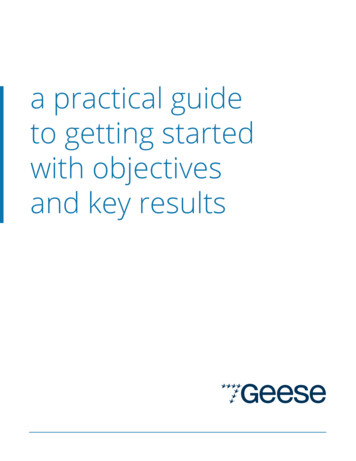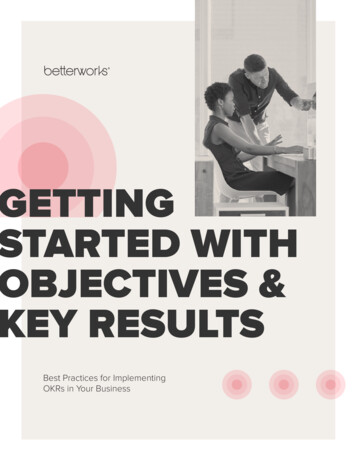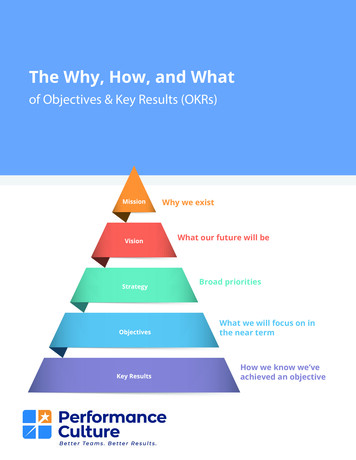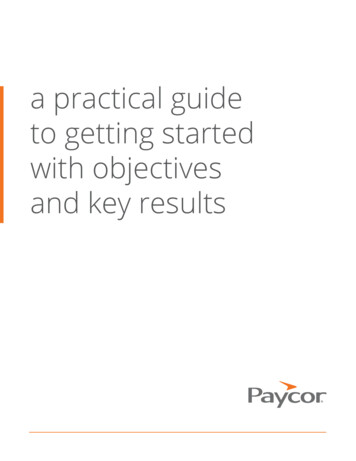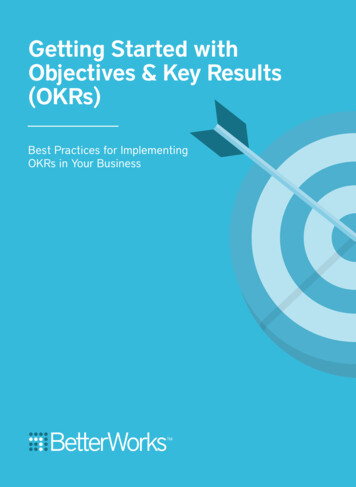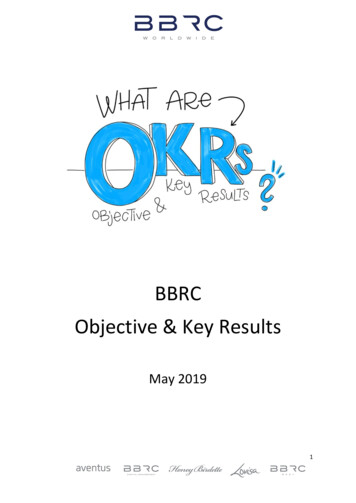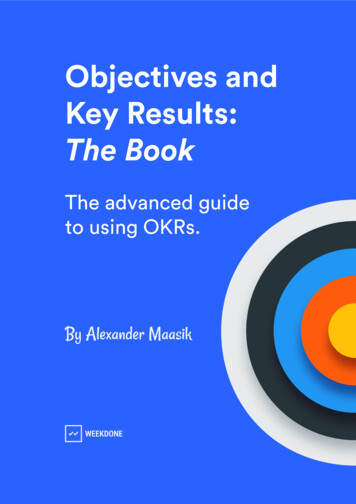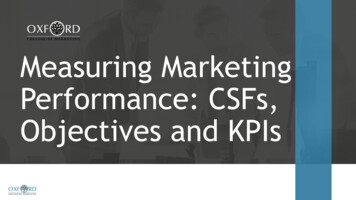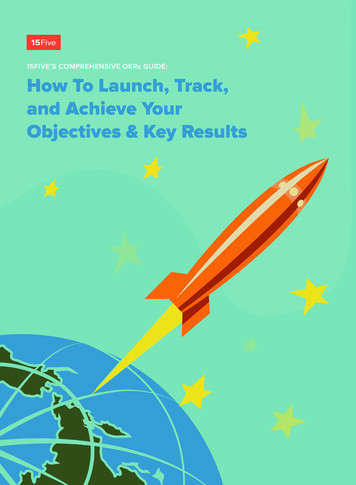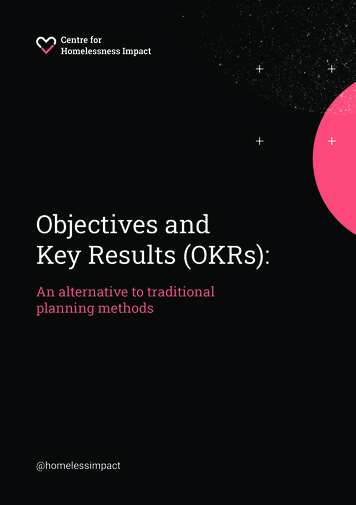
Transcription
Objectives andKey Results (OKRs):An alternative to traditionalplanning methods@homelessimpact1
IntroductionOKR is a framework for setting goalsand tracking their achievementThe application of the framework generates statements of:Objectives:Bold and qualitative goals that an organisation wants to accomplishin order to fulfil its mission.Key results:Tangible and quantitative means of assessing progress towardsthe realisation of objectives.In its simplest form, the OKR approach leads to statements thattake the form: ‘We will [Objective] as measured by [this set of KeyResults].OKR can be used at the level of a whole organisation or thecomponent divisions/groups/teams within an organisation; it can bedeployed over annual and/or quarterly cycles – and/or, occasionally,over more frequent timescales.The OKR approach has been applied by high-profile corporations(notably Google, Amazon, BMW) and philanthropic organisations(notably the Gates Foundation and the ONE campaign). Publicsector users of the approach include GOV.UK and a number of state(e.g. Minnesota) and city (e.g. Syracuse, NY) government bodies inthe US.2
The approach inmore detail:Don’t have too many OKRs: Have a maximum offive Objectives – maybe just one! And for eachObjective, have a maximum of five Key Results.ObjectivesKey resultsWhen applying the OKR model:Don’t try and get the framework to include everything you do. KPIs,as means of focusing on day to day operations, are importantbut should be kept separate from agreed OKRs. The focus onOKRs should be on the small number of things that can generatesustainable improvements in performance.Remember that OKR is about changing behaviours, systems, tools,or processes so that you can achieve and maintain new levels ofperformance. So it can be helpful to have a third category, focusedon the Initiatives – projects , tasks, activities etc. - that will allow therealisation of the agreed OKRs.There may also be value in highlighting any Resourcing Issuesaround the achievement of the OKRs – who leads, how muchtime people will need to commit, any implications for day-to-dayoperations etc.Objectives should be:Significant, action-oriented, inspirational and concreteKey Results should be:Specific and timebound; challenging and not always achievable;and measurable and verifiableObjectivesKey resultsInitiativesResourcing issues45
OKRs: Top 10 tips1Prepare quickly – seek to agreein days or weeks, not months.2Make it ambitious – goalsand KR metrics should feeluncomfortable.3So don’t use OKRs in employeeevaluation processes.4Make the majority of theOKRs bottom up, to supportteam ownership.65Align, don’t cascade –groups should take note oforganisation-wide wide metricsbut make their own decisions(how can we contribute tostrategic goals?), rather thanhaving quotas handed down.6Seek alignment in 360 degrees– up, down, and sideways(it’s important to exploreinterdependencies withother teams).7Keep outputs short –1 page is best, 2 pages max.810At the end of the period:debrief, learn, and adapt forthe next cycle of OKRs –to support better use of themethod over time.Make OKRs visible andtransparent - to the team, to therest of the organisation, andmaybe to external stakeholders.9Regular check-ins areimportant – to assessprogress, measure confidencethat the OKRs will be achievedby the end of the period, toidentify risks and impedimentsand explore potential coursesof action – keep the focus ofthese check-ins on improvingresults, not preparing excuses!7
OKRs example 1: Gov.uk8OKRs example 2: City of Syracuse9
Detach and fill inOKRs: templateOrganisationTime periodObjectiveKey ResultsInitiativesprogress to dateResourcing Issuesconfidence we willcomplete
Sources / further readingBooksDoerr, John (2018) Measure What Matters, 2018.Grove, Andrew (2015) High Output Management.ArticlesCastro, Felipe (2019) OKRs vs KPIs, what is the difference?Castro, Felipe (2020) The Beginner's Guide to OKR - available(alongside other materials) on www.felipecastro.comHarvard Business Review (2018) How VC John Doerr sets (andachieves) goals.Messer, Steve (2019) how we use OKRs on GOV.UK.1213
Centre for Homelessness Impactwww.homelessnessimpact.org Centre for Homelessness Impact 2020Registered Charity Number: E&W1183026; SC049501Company Number: 11732500
Key results: Tangible and quantitative means of assessing progress towards the realisation of objectives. In its simplest form, the OKR approach leads to statements that take the form: ‘We will [Objective] as measured by [this set of Key Results]. OK
